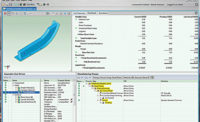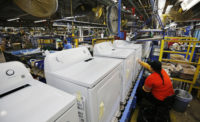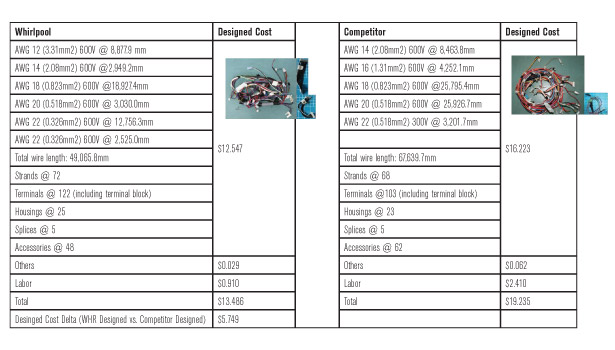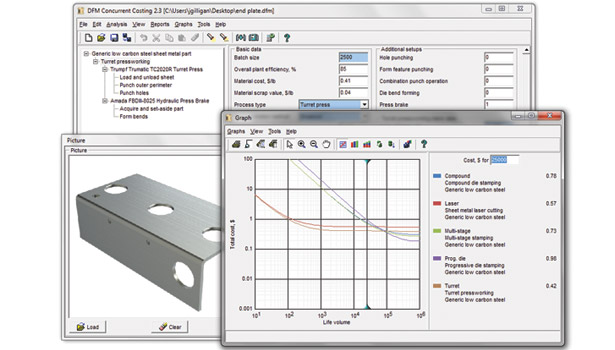Cost Information Management at Whirlpool






This article was adapted from a presentation made at the DFMA Forum. Jason Lynn is the Engineering Manager of Whirlpool Corporations Competitive Cost Analysis Organization. Martin Conner is Convergence Data Services Vice President of Operations
In 2008, Whirlpool established the Competitive Cost Analysis team in Shenzhen, China. This team was chartered to evaluate the as-designed costs of Whirlpool products versus the designs of key competitors. The simple idea was to help designers and engineers make better decisions related to new product programs while also providing cost efficiency ideas for existing products.
|
Global teardown & analysis group based in China
|
The cost reports that the team generated found immediate and increasing demand in engineering and procurement. This pull for more cost data led to the development of a global cost modeling and target cost management team within procurement. The increase in demand, the related growth in the team, and the development of cost modeling capabilities elsewhere within the organization combined to create significant growth pains—some of which were proving to be obstacles to the delivery of bottom line results.
What follows is an overview of this team’s journey from inception, through the pains of growth, into the approach taken to overcome challenges, and the resulting value.
Establishing a Competitive Costing Capability
The Competitive Cost Analysis (CCA) team was set up in 2008 to provide the engineering and procurement departments with the knowledge needed to drive more cost-effective design decisions as well as improved supplier cost collaborations. This was to be accomplished by establishing a standard product teardown process, cost modeling methodology, and a reporting template that would be distributed to individuals in the global engineering and procurement teams. The dollar impact on new and existing product costs would be reported to senior leadership on a regular basis.
The overview illustrated below is a high- level representation of the capability and the main use cases it was to serve—helping engineering to optimize designs for cost and supporting the evaluation of supplier pricing.
At the beginning of 2008, the team consisted of six members and produced eight design cost reports. The impact of those first reports generated considerable excitement across the global engineering and procurement leadership teams. The objective was set to grow the team to more than 40 professionals by the end of 2008. Additionally, plans were made to establish a global team of cost modelers and target cost managers within the procurement organization to provide more direct leverage in supplier negotiations and new product introduction projects.
Growth Creates Opportunity and Challenge
Growth often presents challenges and the growth of cost modeling at Whirlpool was no exception. This was driven by the complexity of the cost reports themselves. Major elements of the reports are illustrated in the report overview below. As the team scaled to perform more than 200 reports per year, productivity and quality began to suffer.
Report Overview: Each report required:
- Hundreds of cost models on desk tops
- Photographs stored in shared drives
- Excel files built for comparisons
- PowerPoint files built from the above
- Electronic distribution of reports ultimately stored on shared drives
- Refreshing of individual cost models as key cost inputs change
Process standardization, documentation, and training helped assimilate new hires and provided some level of productivity improvement, but significant opportunity still remained. In addition to the productivity issues associated with managing the thousands of files associated with cost reports, cost modeling resources were producing increasing numbers of conflicting and/or incorrect cost estimates due to differences in cost input selection. If the value delivered was to grow along with team size, something more had to be done to address productivity and quality.
|
Overview
|
Cost Information Management—Technology Driving Productivity
The team recognized the opportunity to use technology to take on the menial and repetitive tasks that were sapping productivity and negatively impacting quality. The solution was given a name—Cost Information Management (CIM)—and a charter to provide:
- A way to easily find cost models for reuse
- Validation that models where using the correct, current libraries
- Batch updating of groups of cost models as libraries updated
- Automated reporting of findings to replace manual report generation
- Self-service access for business users
It was also recognized that there was existing technology being used within the organization that could be enhanced and integrated to deliver solutions to the team, including:
- Boothroyd-Dewhurst’s DFMA tools—the cost modeling solution used by the team
- PTC’s Windchill—the Product Data Management (PDM) solution used by engineering
- Convergence Data Service’s tools—the part classification (Design for Retrieval) and search (SmartFind) tools used by engineering and procurement
Three years prior to embarking on the development of the CIM solution, Whirlpool had used Design for Retrieval (DFR) to build an enterprise taxonomy for the components and products they design, manufacture, and buy from suppliers. The first task the team now undertook was to extend this data model to capture additional information produced by the cost modeling tools including costs output fields, cost input fields, manufacturing process information, and related files like images. This step would enable individuals to find cost models for reuse, store various related files, and act as the foundation for automating the publication and retrieval of results; all in a web accessible environment.
With the taxonomy in place, the team turned its attention to automating a number of other activities that were hampering productivity and quality.
- Validations were built to check each cost analysis to make sure it was complete and correct prior to publishing results. This helped ensure standard process was followed and that the correct, current cost inputs were used. Currently, more than 60 common error types have been developed into a single error reporting capability
- A project or bundling capability was developed to allow teams to package all cost models and other files associated with one cost report to be bundled into a web accessible repository.
- A refresh capability was then added to allow bundles of cost models to be automatically updated on a scheduled or on demand basis—eliminating the need to update hundreds of cost models one at a time.
- Desk top and shared drive storage was replaced with central storage in the engineering Windchill PDM tool.
- Finally, a globally web accessible search capability was added to facilitate the retrieval of both individual cost models and full cost reports via the SmartFind search tool—eliminating the need for manual assembly and distribution of static PowerPoint reports.
Using CIM, Whirlpool engineers have been able to easily find the exact part or assembly they are most interested in investigating. They can view multiple images and associated cost data of Whirlpool and competitive designs to help understand cost differences and areas to achieve cost advantages. They are also able to use this information to create their own personal reports. An example of this type of comparison is illustrated below. Thanks to the robust taxonomy work completed by the team, these reports can be navigated up and down the entire product structure from entire product all the way down to individual parts.
Growing Success
Whirlpool deployed the new solution in the beginning of 2012 across its major divisions. Training has taken place at all Whirlpool global locations. The new solution has been well received with usage scaling significantly. By May 2012, the database contained over 160 teardown projects representing over 250 units. There were over 125,000 cost models and 250,000 pictures from the teardowns. This database continues to grow as projects are completed.
The core cost modeling team has increased the number of models produced by a factor of nearly 30 while increasing team size only 10-fold. While some of the productivity derives from process standardization and training, the majority can be attributed to the reduction in time spent in non-value added manual activities. Additionally, the CIM SmartFind reporting tool is now used by a large number of Whirlpool engineering staff around the globe, allowing them to do their investigations and create their own custom reports. This is enabling them to further improve new and existing product designs.
Looking for a reprint of this article?
From high-res PDFs to custom plaques, order your copy today!








